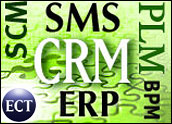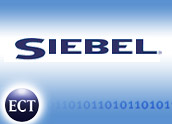
For companies that don’t rank among the Fortune 500, an incremental approach to CRM often feels most comfortable.
These smaller companies get their feet wet with sales force automation software or call center and customer care solutions. They build or buy these applications to handle discrete parts of their businesses, the parts in which problems pop out and command attention.
Once they understand how to solve these problems, they can define other problems and make the case for investment in additional software, said Chris Selland, vice president of sell-side research at Aberdeen Group.
Vendors like RightNow and Salesforce.com learned to take baby steps along with their clients. RightNow has focused on customer care software, while Salesforce.com has made its name in sales force automation tools. But now both seem ready to pounce on the market for full CRM solutions.
CRM Crossover
RightNow introduced its CRM 7.0 today and proudly announced that a number of its current clients will adopt the full CRM package.
“RightNow was always more customer-support centric, and now it’s converging,” Selland said. The company’s CRM 7.0 offers the sales force management tools that its main competitor, Salesforce.com, used to make its name.
Register.com, a domain name registrar, had an existing relationship with RightNow Service, employing the software in its call center. It saw reductions in e-mail and call volume as well as shorter average call length. With CRM 7.0, it’s counting on RightNow to streamline its sales processes throughout the organization. Graco, a business-to-business product manufacturer, is making the same transition, expanding on RightNow Service with adoption of CRM 7.0.
“Salesforce.com and RightNow do a good job for customers in one area and then grow relationships incrementally in their client bases,” Selland said. Salesforce.com announced its cross-over to customer care solutions a week ago. “For a lot of companies” — both clients and vendors — “this is the smarter way to go, to work incrementally to solve the problem,” Selland said. The companies that have gone to market instead with big-footprint CRM systems don’t show prospective clients enough expertise.
“These start at what they’re really good at,” he said. “For a lot of companies, that’s best. For larger companies it makes sense to approach CRM holistically, but that approach is not for everybody.”
Risks of CRM
Having heard countless CRM horror stories, both business-to-business and business-to-consumer companies now tread cautiously in implementing CRM solutions.
“People are not going for huge installations,” said Jim Novo, a CRM consultant in St. Petersburg, Florida. They incur less risk and have an easier time proving a return on their investments if they build or buy something to solve a specific problem. “More people are going with home-built as opposed to outsourced software,” he told CRM Buyer.
As long as they can muster the nature of a problem and the in-house knowledge necessary to write a program to solve it, they’ll avoid adding their own horror stories to CRM lore.
“It’s my opinion that if you build CRM piece by piece and really understand each business solution,” he said, “you’ll end up with a much better understanding of your company and probably a much better business solution.”
With a CRM package or suite, he said, adopters “make tradeoffs and obscure problems on lower levels.” But in building from the bottom up, a company avoids the catastrophe that occurred with many early CRM investments, which suffered from poor training, poor understanding of data collected and poor integration of customer information from different parts of the supply and sales chains.
To Build or Buy?
“That’s not an easy question to answer,” said Novo. “A company has to sit down and say, ‘What do we know?’ and figure out the right business solution. This is very new for most companies.” Data collection may have started years ago on the premise that all of the information stored in the company’s back office would magically provide a 360-degree view of customers and tell the business how to serve them better, but many companies still don’t know how to use the data.
“A lot of companies never even considered direct contact with their customers, and now they’re being forced” into it, Novo said. Internal development of strategies for data use “also fosters the idea of incrementalism. The implementation team doesn’t know what it wants in the end but it does know that it has very specific problems and it solves them one by one.”
Novo doesn’t say that purchased vendor CRM modules can’t solve these defined problems one by one, but he does say that one problem with outsourced pieces is how to integrate the data once a company moves into solving new problems. For some companies the answer lies in using vendor software in the short-term to learn the business case for CRM solutions, then building custom software in-house.














































Social CRM
See all Social CRM